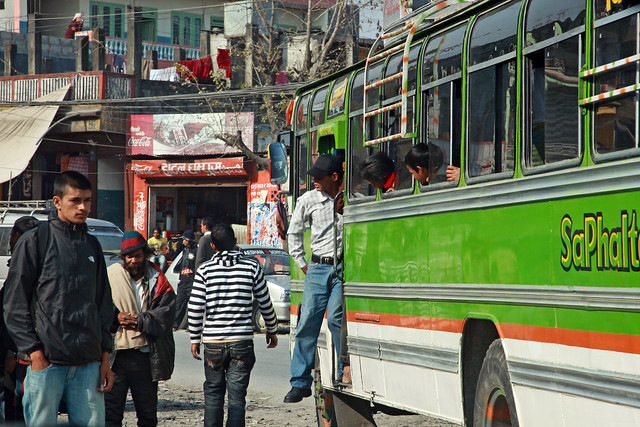Overview
Economic growth is expected to remain positive over the medium term, driven by tourism. However, substantial fiscal and external imbalances present rising liquidity and solvency concerns. Maintaining economic stability requires significant fiscal consolidation while protecting the poor and vulnerable from declining welfare.
Tourism, representing about 21 percent of GDP, continues to bolster economic activity. Tourist arrivals have increased significantly, with China, Russia, and Western Europe being the leading markets. However, spending per tourist has been falling, moderating medium-term growth prospects.
Substantial increases in government spending and reliance on non-concessional borrowing for infrastructure projects have intensified fiscal and external vulnerabilities, considerably elevating public debt. Persistently large fiscal and current account deficits have led to a decline in foreign reserves. High subsidies, while creating fiscal vulnerabilities, have notably supported the budgets of vulnerable households.
The government announced a fiscal adjustment reform agenda in early 2024, focusing on reducing blanket subsidies and replacing them with targeted transfers, rationalizing capital spending, reforming state-owned enterprises, and reducing rising public health spending. Implementation of these reforms has been delayed, leading to rising fiscal and external pressures and a build-up in expenditure arrears. This has raised concerns regarding the financial health of certain sectors in the real economy.
Recent Developments
Tourist arrivals increased by 8.9 percent, reaching an all-time high of 2.05 million in 2024. Real GDP grew by 5.5 percent in 2024 due to robust performance in tourism and related services, bringing poverty back below pre-pandemic levels.
Overall headline inflation remained low at 1.4 percent in 2024, reflecting continued subsidies on a wide range of items. However, inflation picked up in recent months, reaching 4.1 and 4.8 percent in November and December, driven by rapid increases in tobacco, restaurant, and accommodation prices. Food price inflation averaged 6.6 percent in 2024, posing distributional concerns as poor households spend more than a third of their budget on food.
Driven by a 50 percent decline in fish exports and 4.0 percent growth in goods imports, the trade deficit widened from US$3.1 billion in 2023 to US$3.3 billion in 2024. High import costs and external debt repayments pressured official reserves, which fell to US$371.2 million in September 2024 (0.8 months of imports). Reserves recovered to US$708.1 million (1.5 months of imports) in January 2025, supported by a US$400 million currency swap agreement with the Reserve Bank of India and new FX regulations for the tourism sector. Despite recovery, usable reserves coverage remains low (less than one month).
The fiscal deficit widened to 12.3 percent of GDP in 2024 from 10.6 percent in 2023, as recurrent expenditure growth outpaced tepid revenue collection. Delays in subsidy reforms and rising spending on health and wages led to a 6.4 percent growth in total expenditure in 2024. Capital expenditure fell by 7.8 percent in the first three quarters due to financing challenges reflected in continued expenditure arrears accumulation. Revenues grew slowly at an estimated 1.0 percent in 2024, primarily due to the decline in non-tax revenues.
Poverty estimates for Maldives have been revised to reflect new international poverty lines associated with the 2021 Purchasing Power Parity (PPP). The new Upper Middle Income Country (UMIC) poverty line represents a 21 percent increase in the real value of the UMIC poverty line for Maldives relative to the 2017 PPP line. As a result, poverty declined to 8.2 percent in 2024 ($8.30 per person per day, 2021 PPP) from 11.2 percent in 2019. Using the 2017 PPP line, poverty fell to 2.2 percent ($6.85 per person per day, 2017 PPP) down from 3.9 percent in 2019.
Outlook
The completion of the new terminal at Velana International Airport is expected to support increased tourist arrivals, leading to projected economic growth of 5.3 percent on average over the medium term.
This baseline outlook assumes limited fiscal expenditure reduction. As a result, the fiscal deficit is expected to remain elevated and only slowly narrow to 9.8 percent of GDP in 2027, assuming backloaded consolidation measures kick in. With high fiscal deficits and moderation in GDP growth, public debt is projected to rise to 135.1 percent of GDP in 2027.
Given limited fiscal adjustment, imports are expected to remain elevated. Consequently, the current account deficit is expected to remain high and decline marginally to 18.3 percent of GDP in 2027. High external financing requirements, including rising debt servicing obligations in 2025 and 2026, are expected to put further pressure on official reserves and jeopardize macroeconomic stability.
Significant downside risks remain. Any shock to tourism could harm the growth outlook. Increases in global commodity prices could further pressure the current account. Limited domestic and external financing may worsen the liquidity and solvency situation, especially with the approaching spike in external debt repayments. These risks could impact poverty, with the poverty outlook remaining uncertain. An immediate and sizeable fiscal adjustment is essential but needs targeted mitigation measures to lessen the impact on household welfare.
Last Updated: Mar 27, 2025


